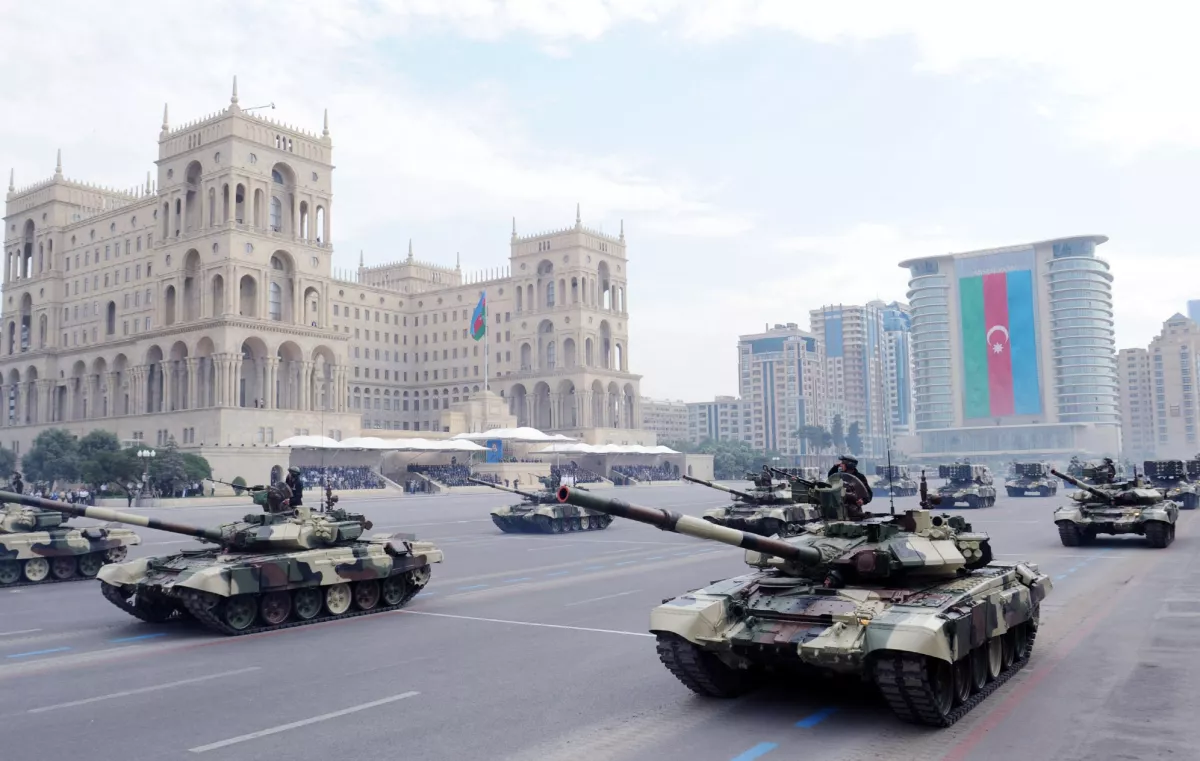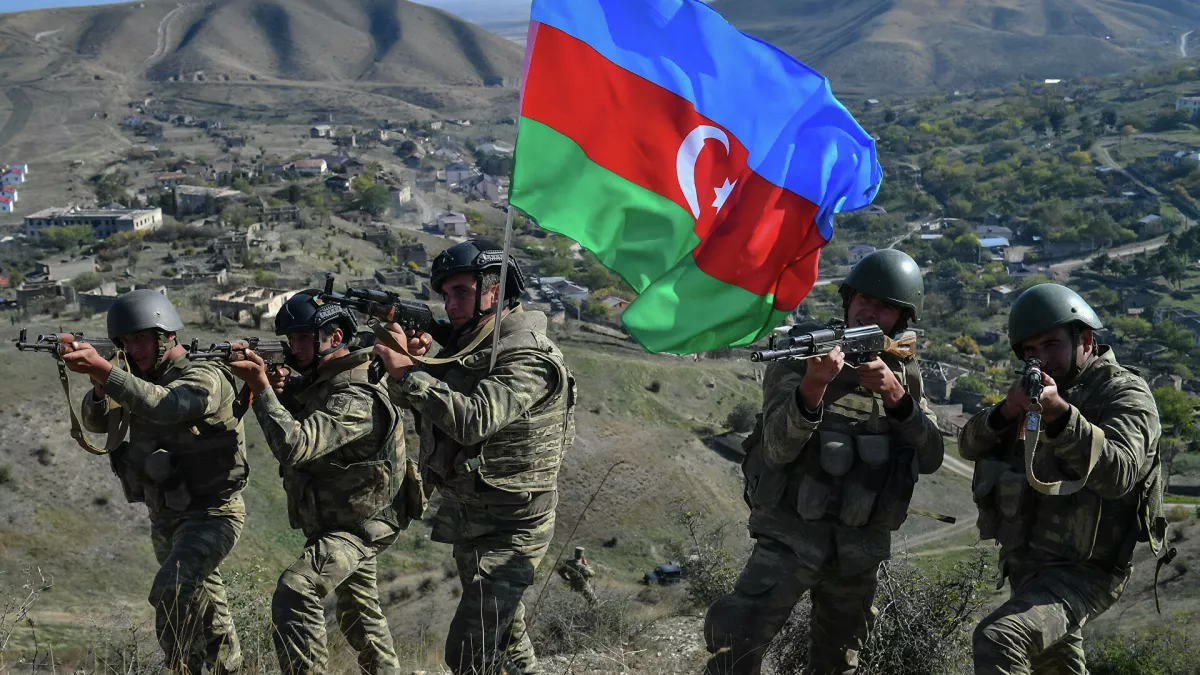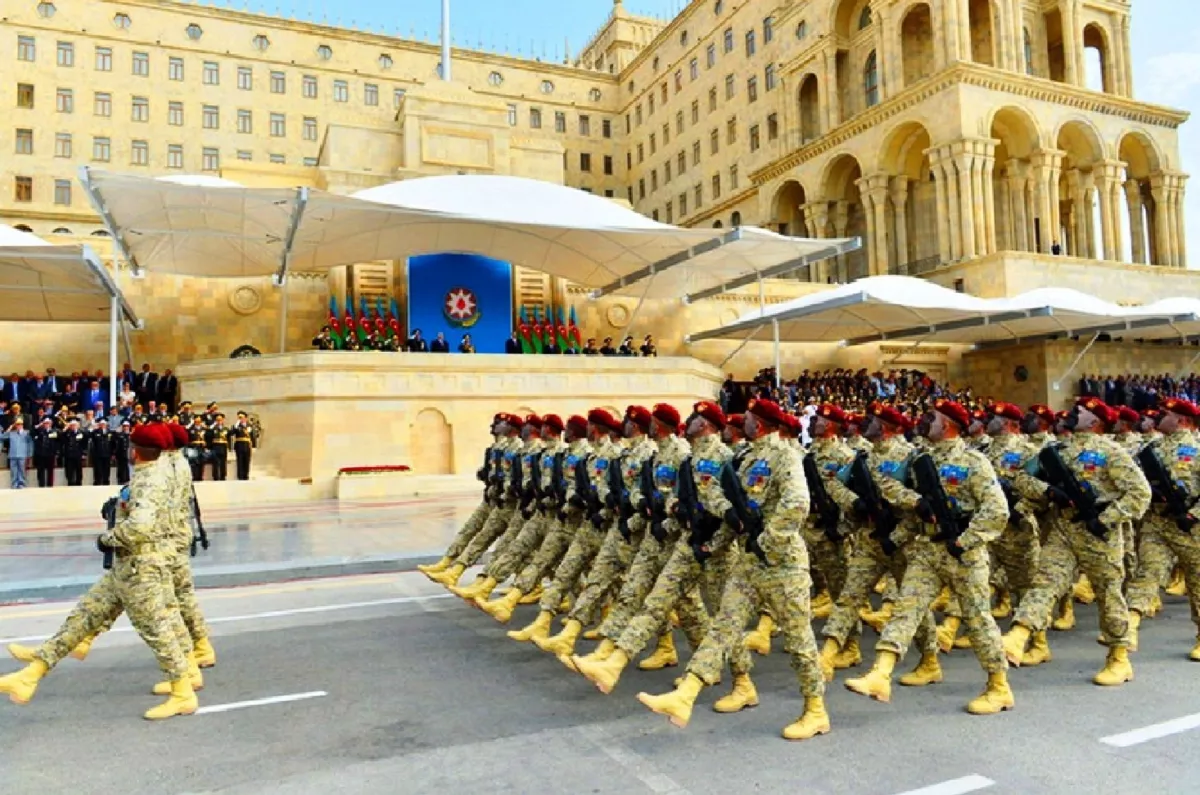The Azerbaijani Army: Shield and sword of the nation On the path to victory
Today, June 26, marks the 107th anniversary of the establishment of the Azerbaijani Armed Forces. On this day, the government of the Azerbaijan Democratic Republic created the first regular military unit—the Separate Azerbaijani Corps.
The first major military success came on September 15, 1918, when the National Army, together with the Islamic Army of the Caucasus under the command of Nuru Pasha, liberated Baku and surrounding districts from Armenian-Bolshevik occupation.
In April 1920, following the occupation of the Azerbaijan Democratic Republic, the Bolshevik government disbanded the National Army.
According to a decree signed by the national leader Heydar Aliyev on May 22, 1998, June 26 was officially declared Armed Forces Day.
The pinnacle of the combat path taken by the Azerbaijani Army was the great Victory in the Patriotic War—the Victory in Karabakh.
The construction of a modern national army began in 1991 following the restoration of Azerbaijan's independence. However, in the early years of independence—when Armenia occupied Azerbaijani lands—the country’s leadership failed to establish a regular army. The enemy exploited this situation, and the scale of occupation continued to grow. Azerbaijan faced the grave threat of losing its independence.
During this difficult time, national leader Heydar Aliyev returned to power, dissolved uncontrolled armed groups, and initiated the process of building a regular army. Thanks to his tireless efforts, a modern Azerbaijani army was established, developed, and strengthened.
It was after Heydar Aliyev’s return to leadership that both the Azerbaijani people and army gained unshakable faith in victory. At his call, a large-scale mobilisation campaign was carried out, and military units were brought to full operational capacity.
By order of the Commander-in-Chief, in 1994, the army conducted successful military operations in the Fuzuli direction, delivering crushing blows to the enemy. The results followed swiftly—on the night of January 5–6, 1994, 20 villages of the Fuzuli district were liberated from occupation, as well as the settlement of Horadiz and the village of Jojug Marjanli in the Jabrayil district.
At the dawn of the new millennium, Azerbaijan stood on the threshold of an era of transformation—facing historic challenges and global opportunities. The country set a course to strengthen its sovereignty and defence capabilities, laying the foundation for future achievements.
President Ilham Aliyev, continuing the military development policy of national leader Heydar Aliyev, made the strategic decision to enhance Azerbaijan’s military power and reform the Armed Forces in line with NATO standards. After 2003, military spending increased more than fifteenfold. Conditions for service members significantly improved, both in terms of duty and living standards. The army was equipped with the most modern weaponry and military technology.
Over 20 military factories were built across the country, launching the production of a wide range of military goods—totalling some 1,200 different items. Azerbaijan also established highly effective military-technical cooperation with friendly nations.
As a result of these targeted efforts, the Azerbaijani Army has become the strongest in the region. According to the Global Firepower Index, Azerbaijan currently ranks 60th among 145 countries worldwide.

The modernised Azerbaijani Army demonstrated its growing power in April 2016. On April 2, Armenian armed forces stationed in the occupied territories of Azerbaijan launched artillery strikes against Azerbaijani military positions along the entire line of contact, as well as against civilian settlements in nearby districts. The fiercest clashes occurred in the Aghdara–Tartar–Aghdam and Khojavand–Fuzuli directions.
In response to Yerevan’s provocations, Azerbaijan launched a swift counteroffensive. During this operation, the Azerbaijani Army destroyed up to 30 enemy tanks, over 25 artillery systems, and other military equipment. Around 320 Armenian soldiers and officers were eliminated, and more than 500 were wounded.
As a result of these lightning operations, the Azerbaijani Armed Forces inflicted a heavy defeat on Armenia. Over 2,000 hectares of occupied territory in the Fuzuli, Jabrayil, and Aghdara districts were liberated. Azerbaijani troops also established full control over thousands of additional hectares and significantly improved the security of nearby civilian settlements.
It is particularly noteworthy that during the April battles, the well-equipped and well-trained Azerbaijani Army made its first use of strike drones—causing panic in the enemy’s ranks.
The most significant outcome of the April 2016 clashes was that the Azerbaijani Armed Forces successfully carried out a counteroffensive from unfavourable positions and accomplished all set objectives. The configuration of the line of contact was altered, and strategic heights were liberated. The victory also held great moral and psychological weight—the enemy was forced to reckon with the full strength of the Azerbaijani state and armed forces.
Unwilling to accept its heavy defeat, Armenia’s military-political leadership initiated another large-scale provocation in the direction of Nakhchivan in 2018. In response, the Azerbaijani Armed Forces launched a counteroffensive operation that would go down in the annals of the country’s military history.
If the April 2016 clashes demonstrated Azerbaijan’s growing military power, then the 2018 “Gunnut Operation” showcased the advanced manoeuvrability and tactical precision of its Armed Forces. As a result of this operation, the village of Gunnut in Sharur district was liberated, along with the Aghbulag height and the Gizilgaya and Garagaya mountains. Azerbaijani forces also established full control over the village of Arpa in the Daralayaz region and a strategic route: Yerevan–Yeghegnadzor–Gorus–Lachin–Khankendi. In total, the Azerbaijani Army liberated approximately 11,000 hectares of territory.
In July 2020, Armenia once again staged a provocation—this time along the conditional Azerbaijan-Armenia border in the Tovuz district.
Beginning at noon on July 12, 2020, Armenian armed forces launched an attempted incursion to seize Azerbaijani military positions. Using mortars and large-calibre artillery, the enemy shelled both frontline positions and nearby civilian settlements. The fighting continued until the evening of July 17.
However, all attempts by the Armenian army to capture positions were decisively repelled. In response, the Azerbaijani Armed Forces destroyed enemy firing points along the front line, strongholds, armoured vehicles, rear reserves, artillery systems, military infrastructure, and eliminated around 100 enemy personnel.
During the defence of Azerbaijani positions in the Tovuz clashes, 12 Azerbaijani servicemen fell as martyrs.
During those days, a massive march of solidarity took place in Baku. Thousands of citizens took to the streets to express their support for the Armed Forces and the Commander-in-Chief. The people stood united with their army, and by the call of President Ilham Aliyev, thousands of young men began volunteering to defend the homeland.
The Tovuz clashes, culminating in a decisive Azerbaijani victory, paved the way for the liberation of the long-occupied lands.
On the morning of September 27, 2020, Armenian armed forces stationed in the occupied territories of Azerbaijan launched a large-scale bombardment of Azerbaijani army positions and frontline civilian settlements. The shelling resulted in the deaths of civilians and servicemen and caused serious damage to civilian infrastructure, pushing Azerbaijan’s patience to its limit.
By order of the Supreme Commander-in-Chief, President Ilham Aliyev, the Azerbaijani army commenced counteroffensive operations along the entire front line. On November 8, 2020, the symbol of Karabakh, the city of Shusha, was liberated from occupation.
On November 10, 2020, a trilateral statement was signed between Azerbaijan, Armenia, and Russia, bringing the war to an end. The conflict concluded with the complete defeat of Armenia. This victory ended nearly 30 years of occupation and restored Azerbaijan’s territorial integrity.

In just 44 days, during the operation known as Iron Fist, the Azerbaijani army liberated 5 cities, 4 settlements, and 286 villages from occupation.
In 2022, the Azerbaijani Armed Forces conducted successful operations in response to enemy provocations. Fighting began in March with Operation Farrukh, during which Azerbaijani forces gained control of the strategic height—Mount Farrukh.
On August 3, members of illegal Armenian armed groups carried out a terrorist sabotage attack against Azerbaijani military personnel. They attempted to seize Mount Girkhgiz, located in the mountainous area covering Kalbajar and Lachin districts, to establish new combat positions.
The Azerbaijani army launched Operation Revenge, during which the heights of Girkhgiz and Saribaba along the Karabakh ridge of the Lesser Caucasus, as well as several other dominant heights, were brought under Azerbaijani control.
On August 6, Mount Buzdukh and the adjacent heights were also secured by Azerbaijani forces.
In the early hours of September 12, Armenian armed forces carried out a large-scale provocation along three sectors of the Azerbaijan-Armenia border: Dashkasan, Kalbajar, and Lachin. This marked the first major escalation since Azerbaijan’s victory in the 44-day war.
Enemy sabotage groups mined areas between Azerbaijani military positions and supply routes across several directions. Several Azerbaijani army positions, shelters, and strongholds in the Dashkasan, Kalbajar, and Lachin districts came under intense fire from various weapons, including mortars.
To prevent provocations and military threats to Azerbaijan’s territory and sovereignty, as well as to ensure the safety of the servicemen, decisive retaliatory actions were undertaken. Armenian armed forces’ firing points were suppressed, successfully preventing the escalation of the conflict.
In the September clashes, the Armenian side suffered heavy losses. According to Armenian official sources, the enemy lost 224 soldiers, with three missing in action, and over 300 wounded.
The Azerbaijani army has brought under its control a total of 53 combat positions, two mortar firing points, and eight strategically important heights. Key enemy assets were destroyed, including a permanent deployment base of an Armenian motorised rifle brigade, launch sites of two S-300 surface-to-air missile systems, and two S-125 missile systems.
On September 19, 2023, a mine explosion occurred on the Ahmadbayli–Fuzuli–Shusha road, triggered by an explosive device previously planted by Armenian armed forces’ sabotage groups in Azerbaijan’s Karabakh economic region. The blast resulted in civilian casualties.
On the same day, a vehicle carrying servicemen of the Internal Troops of the Ministry of Internal Affairs detonated a mine planted by Armenian reconnaissance-sabotage groups. Several servicemen were killed and wounded.
To prevent further large-scale provocations in the Karabakh economic region, disarm and remove Armenian armed formations from Azerbaijani territory, and restore constitutional order, local counter-terrorism operations have been initiated in the region.
Through the use of precision-guided weapons, Azerbaijani forces disabled numerous Armenian Armed Forces positions along the frontline and deep within enemy territory, including long-term firing points and various combat assets and military facilities.
Within the first hours, over 60 Armenian military positions were brought under Azerbaijani control. More than 20 units of military equipment, over 40 artillery pieces, more than 30 mortars, 2 surface-to-air missile systems, over 6 Mortira electronic warfare stations, and other military hardware were destroyed.

The local counter-terrorism operation lasted less than a day. “Azerbaijan duly punished the enemy by immediately taking necessary steps. Local antiterrorist measures were started, and all pending objectives were completed in one day. The terrorists were punished, and it was shown to Armenia again that all of their provocations would be met with a fitting response,” President Ilham Aliyev stated in his address to the nation.
Following the victory in the Patriotic War and the full restoration of sovereignty, Azerbaijan continues to strengthen its military potential. The combat readiness of the army grows steadily.
The editorial team of Caliber.Az congratulates the personnel of the Azerbaijani army and wishes our warriors success in their sacred duty to protect the independence, sovereignty, and territorial integrity of Azerbaijan.








